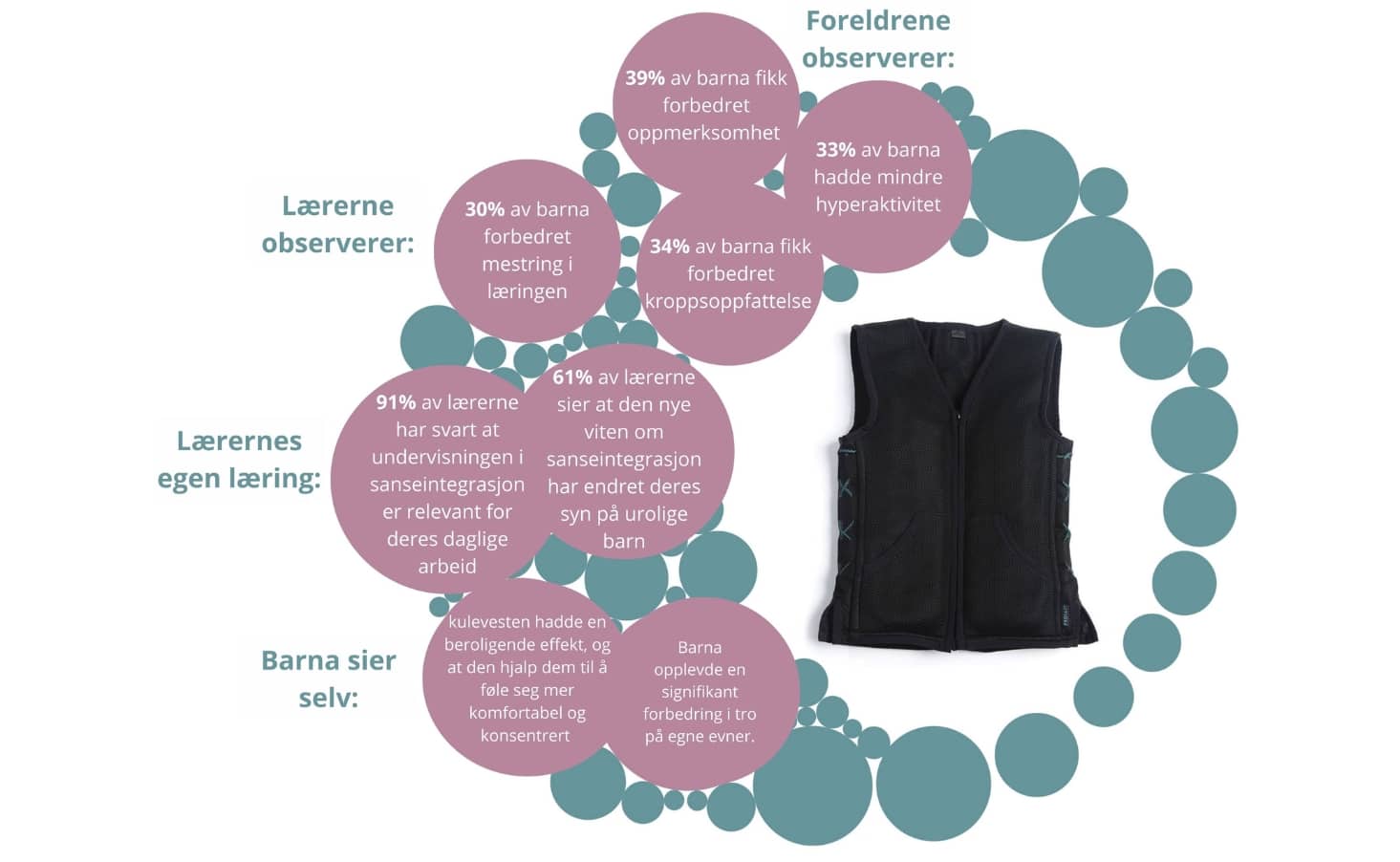Sanseintegrasjon kan redusere bruken av tvang i psykiatrien
Tvang i psykiatrien er et stort problem for pasienter, ansatte og samfunnet. Et forskningsprosjekt viser nå at systematisk arbeid med sanseintegrasjon og sansemodulasjon kan redusere tvang blant psykisk syke.
Nærmere bestemt ser noen av prosjektets resultater slik ut:
• Behovet for tvangsfiksering falt med 38 %
• Behovet for tvangsmedisinering falt med 46 %
• Totalt sett falt behovet for tvang med 42 %
Forskningsergoterapeut, Charlotte Andersen, startet et pilotprosjekt tilbake i 2013 for å belyse hvordan tvang i psykiatrien kan reduseres ved hjelp av sanseintegrasjon. Og mye har skjedd siden den gang. Pilotprosjektet er gjennomført og utvidet til en case-studie, og dokumenterer nå at systematisk arbeid med sanseintegrasjon kan redusere tvang blant psykisk syke – og forskningsartikkelen ble inkludert i Nordic Journal of Psychiatry i 2017.
Studien er basert på SPI-metoden, som er utviklet i samarbeid med blant annet Syddansk Health Innovation i Region Syd, og handler om å jobbe strukturert med menneskets sanser: Følelsesansen, hørsel, lukt, smak, syn, muskel-leddsans og balansesansen. Metoden inkluderer et spesiallaget kursopplegg, slik at pleiepersonalet lærer å forebygge tvangsepisoder ved å tilby pasientene sansestimulerende aktiviteter.
Forskningsartikkelen heter «Applying sensory modulering to mental health inpatient care to reduce seclusion and restraint: a case control studio» og er skrevet av Charlotte Andersen, Anne Kolmos, Kjeld Andersen, Volmar Sippel & Elsebeth Sten-ager og ble inkludert i Nordic Journal of Psychiatry i juni 2017.
Den begynner med sammendraget nedenfor og kan kjøpes i sin helhet her >
Background: Clinical training in managing conflicts and preventing violence seldom contains sensory modulation (SM) as a method to de-escalate and prevent restraint and seclusion. Sensory-based interventions promote adaptive regulation of arousal and emo-tion. SM is a complementary approach that is associated with reduced rates of seclusion and restraint in mental healthcare, but there is need for more research in this area.
Aims: Using SM to reduce restraint and seclusion in inpatient mental health care.
Methods: The study included two similar psychiatric units where one unit implemented SM and one unit served as the control group. In the very beginning of the study, a staff-training program in the use of SM including assessment tools and intervention strategies was established. Data on restraint and forced medicine were sampled post the course of the year of implementation and compared with the control group.
Results: The use of belts decreased with 38% compared to the control group. The use of forced medication decreased with 46% compared to the control group. Altogether the use of physical restraint and forced medication decreased significantly with 42% (p<.05).
Conclusions: Implementing a SM approach in mental healthcare facilities has a signifi-cant effect on the reduction of restraint and seclusion. As a part of the implementation, staff training and education in SM are crucial.


